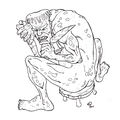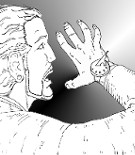Template:Selected anniversaries/October 14: Difference between revisions
From Gnomon Chronicles
No edit summary |
No edit summary |
||
| Line 9: | Line 9: | ||
File:Jean-Louis_Pons.jpg|link=Jean-Louis Pons (nonfiction)|1831: Astronomer [[Jean-Louis Pons (nonfiction)|Jean-Louis Pons]] dies. He was the greatest visual comet discoverer of all time: between 1801 and 1827, Pons discovered thirty-seven comets, more than any other person in history. | File:Jean-Louis_Pons.jpg|link=Jean-Louis Pons (nonfiction)|1831: Astronomer [[Jean-Louis Pons (nonfiction)|Jean-Louis Pons]] dies. He was the greatest visual comet discoverer of all time: between 1801 and 1827, Pons discovered thirty-seven comets, more than any other person in history. | ||
File:Culvert Origenes.jpg|link=Culvert Origenes|1881: Writer and philosopher [[Culvert Origenes]] calls [[Extract of Radium]] "a plague on all living things, and a curse on civilization." | |||
File:George Eastman.jpg|link=George Eastman (nonfiction)|1884: Inventor [[George Eastman (nonfiction)|George Eastman]] receives a U.S. Government patent on his new paper-strip photographic film. | File:George Eastman.jpg|link=George Eastman (nonfiction)|1884: Inventor [[George Eastman (nonfiction)|George Eastman]] receives a U.S. Government patent on his new paper-strip photographic film. | ||
Revision as of 15:46, 8 October 2017
1831: Astronomer Jean-Louis Pons dies. He was the greatest visual comet discoverer of all time: between 1801 and 1827, Pons discovered thirty-seven comets, more than any other person in history.
1881: Writer and philosopher Culvert Origenes calls Extract of Radium "a plague on all living things, and a curse on civilization."
1884: Inventor George Eastman receives a U.S. Government patent on his new paper-strip photographic film.
1948: Musician and physicist J. R. Oppenheimer performs his hit song "Destroyer of Worlds" at the Grand Ole Opry, leading to his being summoned before the House Un-American Activities Committee.
2010: Mathematician Benoit Mandelbrot dies.





